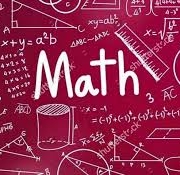Cerimonia di consegna dei Premi INDAM-SIMAI-UMI 2014
Cerimonia di consegna dei
Premi INDAM-SIMAI-UMI 2014
10 Marzo 2016 -INDAM Roma
Programma Workshop e Premiazione
- 14.30 -14.40
Apertura Prof. Giorgio Patrizio (Presidente INDAM)
- 14.40 -15.20
Stefano Bosia (Politecnico di Milano)“On some diffuse interface models for binary fluids”
- 15.20-16.00
Simone Di Marino (Scuola Normale Superiore, Pisa) “Funzioni a variazione limitata e insiemi di perimetro finito in spazi metrici di misura: punto di vista funzionale e geometrico”
- 16.00-16.30 Pausa
- 16.30 -17.10
Eleonora Di Nezza (Imperial College, Londra) “Degenerate complex Monge-Ampère equations”
- 17.10-17.50
Tommaso Lorenzi (University of St Andrews, Edimburgo) “Evolutionary dynamics of structured populations and related mathematical aspects”
- 17.50 Premiazione
***********
Author: Stefano Bosia, Politecnico di Milano, Italy.
Title: On some diffuse interface models for binary fluids
Abstract: We discuss some results on the mathematical analysis of diffuse interface models in phase separation of binary mixtures (e.g., coarsening of alloys or bistable polymeric fluids).
A typical phase separation model is the well-known model H, constructed by coupling the convective Cahn-Hilliard equation with the Navier-Stokes system through the so-called Korteweg force. Here we consider some variants of the model, which account, e.g., for shear dependent viscosity or chemically reacting components.
First we study some basic issues like existence, uniqueness and regularity of solutions.
Then we analyse the long-time behaviour of the infinite dimensional dissipative dynamical systems generated by the systems studied. More precisely, we prove the existence of global attractors, exponential attractors, pullback attractors and trajectories attractors for the corresponding dynamical systems. Also, we discuss the robustness of such invariant sets with respect to perturbations of some parameters of the model. The results obtained represent natural extensions of the properties known for single fluid flows, whose features are considered a benchmark for all new techniques proposed in the literature.
Finally, as a more realistic description of phase separation phenomena, we introduce a Cahn-Hilliard equation accounting for nonlocal interactions through a singular kernel. In this case some well-posedness and regularity results are demonstrated.
At the end of the talk we give some quick insights on further results obtained developing the thesis, which include modelling of the coupling effects between mechanical and electronic properties in semiconductors and an application of the theory of dynamical systems to predict the lifetime of polycrystalline metals undergoing a high cycle fatigue regime.
***********
Author: Simone Di Marino (Scuola Normale Superiore, Pisa)
Titolo: Funzioni a variazione limitata e insiemi di perimetro finito in spazi metrici di misura: punto di vista funzionale e geometrico
Abstract: Negli ultimi anni c’è stato un enorme sviluppo nel campo dell’analisi in spazi non regolari, cominciando dal lavoro fondamentale di Cheeger. Miranda introdusse la nozione di funzione BV in spazi metrici di misura, e quindi anche la nozione funzionale di insiemi di perimetro finito. Dopo un panoramica sui principali contributi in questo campo, compareremo questo approccio funzionale ad uno più geometrico, cioè rilassando il contenuto esterno di Minkowski, mostrando che sono in effetti equivalenti.
***********
Author: Eleonora Di Nezza (Imperial College, London, UK)
Titolo: Degenerate complex Monge-Ampère equations
Abstract: We introduce a new tool in pluripotential theory, the generalized Monge-Ampére capacities and use these to study degenerate complex Monge-Ampère equations whose right-hand side is smooth outside a divisor establishing uniform estimates which generalize both Yau’s and Kolodziej’s celebrated estimates.
We will also discuss as such generalized capacities turn out to be the key ingredient to show that the Kaehler-Ricci flow can be run from any arbitrary positive closed current, and that it is immediately smooth in a Zariski open subset of the Kaehler variety X.
***********
Author: Tommaso Lorenzi, School of Mathematics and Statistics, University of St Andrews
Title: Evolutionary dynamics of structured populations and related mathematical aspects
Abstract: Over the last fifty years mathematical models have helped to shed light on the way ecological, evolutionary and behavioural mechanisms shape the dynamics of structured populations. In particular, there is now an increasing number of examples where mathematical models have been used as in silico laboratories to test hypotheses, and decide which postulated qualitative attributes of a population are consistent with the observed behaviours.
During my PhD I contributed to this field by advancing analysis and numerical simulation of integrodifferential equations that arise in mathematical models of structured populations. On the one hand, these equations can support a deeper understanding of the principles that underpin patterns of evolution and adaptation in living systems. On the other hand, they pose challenging problems from both analytical and numerical point of views.
In this talk, I will provide an overview of the analytical results and numerical simulations presented in my PhD thesis, subsequent research developments and future perspectives.
Locandina



